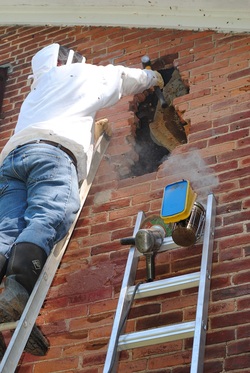
"Go big or go home." I've heard that saying a lot over the years and never really thought it applied to many of my personal endeavors. In retrospect I think that may be an appropriate description of this past Sunday's adventure. This weekend we went on our first honeybee colony cutout call. "Cutout" is the term used to describe to process of removing an established bee colony from a building or structure. You literally cut (or bash or pry) open the walls or ceiling of the structure and remove the comb and bees. Our cutout came as a response to an email sent by our beekeeper's club.
A woman in a nearby neighborhood had a honeybee colony that had taken up residence inside the brick walls of her home. She believed that they had moved in as a swarm earlier this spring. She wasn't having much luck finding someone that would remove the bees without killing them. One of the officers in the club sent us a inquiry asking if we would be willing to assist her. We had some spare time available on Sunday so I (perhaps in a moment of insanity) offered to drive by her home and assess the situation.
The colony had established itself inside an old walled off chimney cavity in the brick home. The cavity was about 24 inches wide by 12 inches deep and two stories tall. An all around perfect home for a colony of honeybees. The brick and mortar up the cavity were riddled with small openings and the bees were using two or three of them as an entrance. The primary entrance was about 12 feet off the ground where a section of mortar had fallen out.
While I'm trying to learn the art of beekeeping, a carpenter I am not! I told her she had a few options. She could call a professional cutout and removal service that would remove the bees and repair the structure. I'm no pro at this but I estimated it would likely cost in the range of $500 and could be up to $1000 depending on the size of the colony and repair job. I am not aware of one in our county but there are a few listed in the broader metro area. I then volunteered to help remove the bees if she was okay with me simply tearing away the deteriorating brick covering that part of the abandoned chimney cavity. She would need to contact a mason on her own to manage the repairs once the site was bee-free. I wanted to get the experience of a cutout while attempting to help anyone interested in saving vs. destroying the bees. She jumped on the deal.
Sunday morning my wife and I trooped over to her home to get started removing the "3 to 4 week old swarm" that was in the wall. The first small opening revealed the bottom of the combs. Layer after layer of brick came out while larger areas of comb were exposed. After 30 minutes on the job it became clear this wasn't a late spring swarm. These girls have been busy building up their home for at least a couple of years. After more than an hour of opening the wall we exposed 6 combs about 3 feet tall by 10 to 12 inches wide. They were much better carpenters than me and you can't help but admire the beauty of their handiwork. I started Sunday expecting to collect a meager box of bees and left with a deep box full of brood, honey and bees.
Had I known that this colony had been established for several years I suspect I wouldn't have agreed to help so eagerly. But as they say, "go big or go home." Experience is what I wanted, and experience is what I got. The cutout went smoothly despite some of my rookie mistakes. I have not yet spotted the queen to confirm that she survived the extraction. I suspect we'll know in a few days upon inspection if she is there or if the colony is attempting to build emergency queen cells on some of those eggs in the brood comb. I had to make 3 follow up trips to collect more bees and I inadvertently dropped many down the chimney cavity whilst trying to collect them for transport. The homeowner had a great attitude and I suspect she'll end up becoming a beekeeper, albeit with bees in a hive instead of her home. And finally my wife was on board for the experience and was a cheerful co-conspirator in spite of having a brick dropped on her foot from above by yours truly. Most spouses would have considered the idea outright madness. She not only supported the idea, she was as deep in those bees as I was. For that I am truly a fortunate man.
A woman in a nearby neighborhood had a honeybee colony that had taken up residence inside the brick walls of her home. She believed that they had moved in as a swarm earlier this spring. She wasn't having much luck finding someone that would remove the bees without killing them. One of the officers in the club sent us a inquiry asking if we would be willing to assist her. We had some spare time available on Sunday so I (perhaps in a moment of insanity) offered to drive by her home and assess the situation.
The colony had established itself inside an old walled off chimney cavity in the brick home. The cavity was about 24 inches wide by 12 inches deep and two stories tall. An all around perfect home for a colony of honeybees. The brick and mortar up the cavity were riddled with small openings and the bees were using two or three of them as an entrance. The primary entrance was about 12 feet off the ground where a section of mortar had fallen out.
While I'm trying to learn the art of beekeeping, a carpenter I am not! I told her she had a few options. She could call a professional cutout and removal service that would remove the bees and repair the structure. I'm no pro at this but I estimated it would likely cost in the range of $500 and could be up to $1000 depending on the size of the colony and repair job. I am not aware of one in our county but there are a few listed in the broader metro area. I then volunteered to help remove the bees if she was okay with me simply tearing away the deteriorating brick covering that part of the abandoned chimney cavity. She would need to contact a mason on her own to manage the repairs once the site was bee-free. I wanted to get the experience of a cutout while attempting to help anyone interested in saving vs. destroying the bees. She jumped on the deal.
Sunday morning my wife and I trooped over to her home to get started removing the "3 to 4 week old swarm" that was in the wall. The first small opening revealed the bottom of the combs. Layer after layer of brick came out while larger areas of comb were exposed. After 30 minutes on the job it became clear this wasn't a late spring swarm. These girls have been busy building up their home for at least a couple of years. After more than an hour of opening the wall we exposed 6 combs about 3 feet tall by 10 to 12 inches wide. They were much better carpenters than me and you can't help but admire the beauty of their handiwork. I started Sunday expecting to collect a meager box of bees and left with a deep box full of brood, honey and bees.
Had I known that this colony had been established for several years I suspect I wouldn't have agreed to help so eagerly. But as they say, "go big or go home." Experience is what I wanted, and experience is what I got. The cutout went smoothly despite some of my rookie mistakes. I have not yet spotted the queen to confirm that she survived the extraction. I suspect we'll know in a few days upon inspection if she is there or if the colony is attempting to build emergency queen cells on some of those eggs in the brood comb. I had to make 3 follow up trips to collect more bees and I inadvertently dropped many down the chimney cavity whilst trying to collect them for transport. The homeowner had a great attitude and I suspect she'll end up becoming a beekeeper, albeit with bees in a hive instead of her home. And finally my wife was on board for the experience and was a cheerful co-conspirator in spite of having a brick dropped on her foot from above by yours truly. Most spouses would have considered the idea outright madness. She not only supported the idea, she was as deep in those bees as I was. For that I am truly a fortunate man.
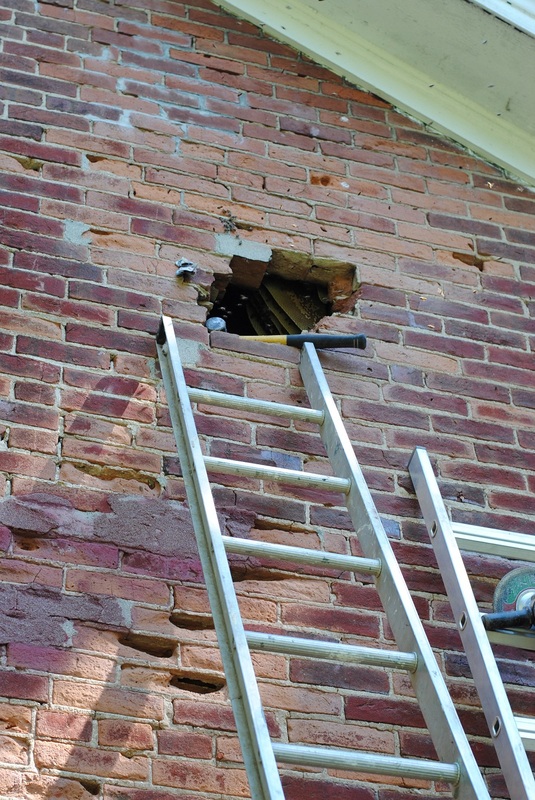
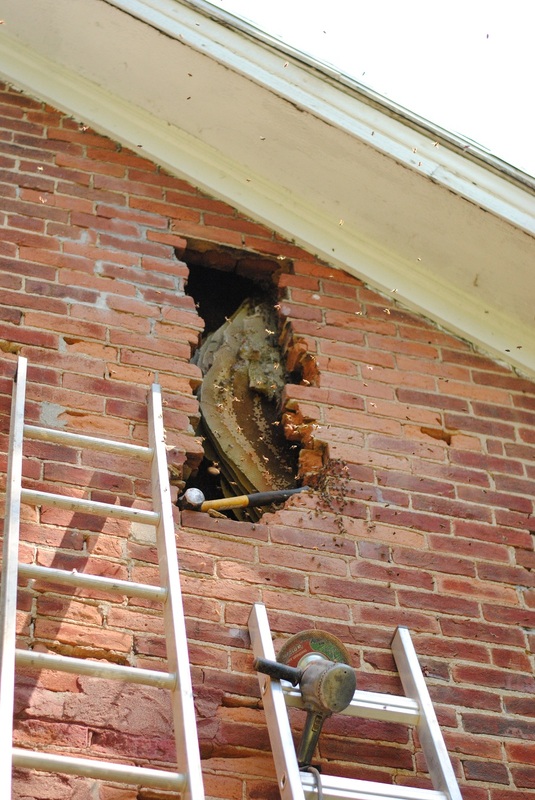
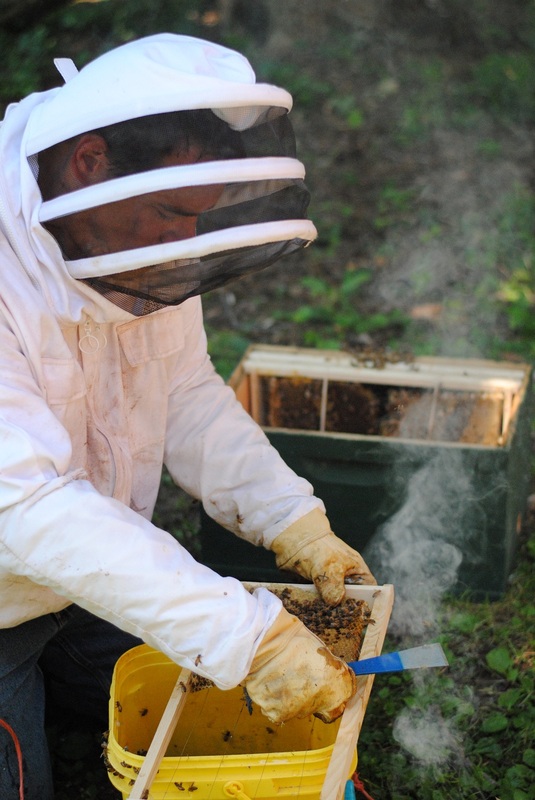
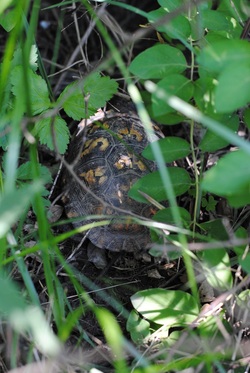
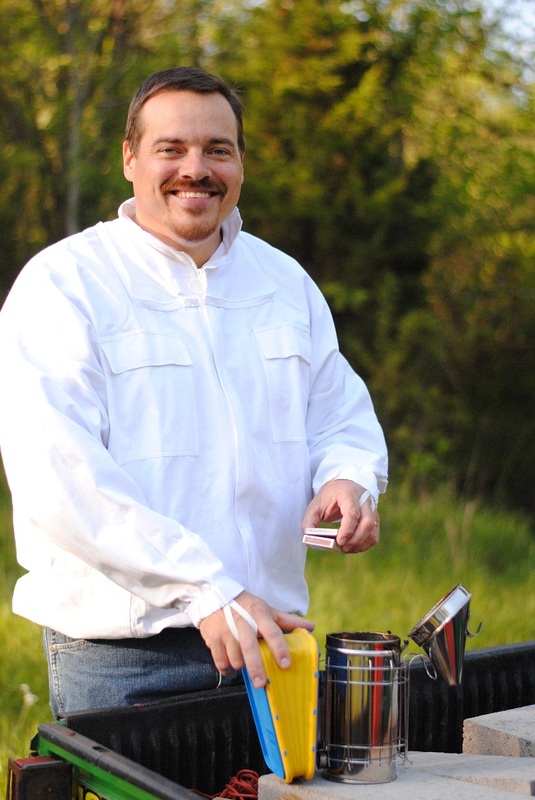
 RSS Feed
RSS Feed